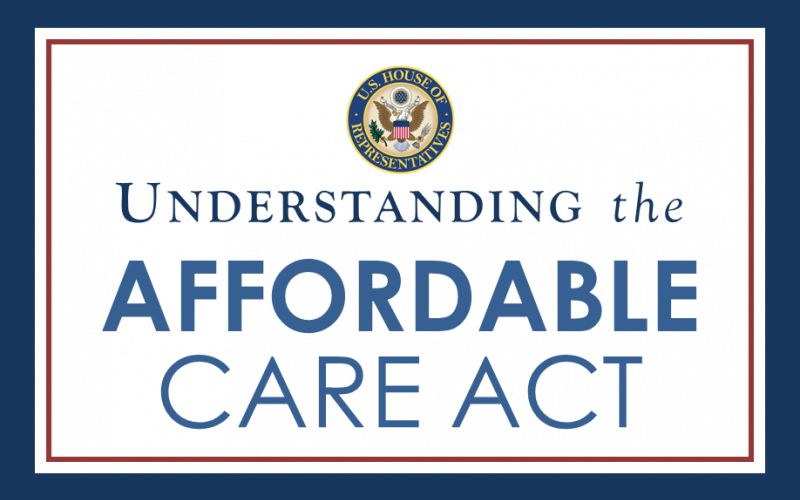On March 23, 2010, the Patient Protection and Affordable Care Act was signed into law by the president. Barrack Obama’s administration has been working on the Affordable Care Act throughout his entire term with the hopes of changing healthcare for the better. Whether you agree or disagree with this program, it’s slowly rolling out into law and will continue to have far reaching impacts for the American people when it comes to their selection of health insurance.
The Affordable Care Act aims to achieve the following goals:
- Improve the quality of healthcare and patient safety
- Make coverage more secure for those who have insurance, and extend affordable coverage to anyone that is uninsured
- Ensure access to quality, culturally competent care for all American demographics
- Reduce the growth of healthcare costs while promoting high-value, effective care
- Emphasize primary and preventive care associated with community prevention services
- Promote the adoption and usefulness of health information technology
The Affordable Care Act, often referred to as Obamacare, has been dominating headlines for the past few months, especially with all the issues related to the launch of the Health Insurance Marketplace.
This has left widespread confusion as to what kind of impact the Affordable Care Act will actually have for both insured and uninsured Americans alike. As more of the aspects of this legislation come into practice, it’s important to understand what kind of impact this will have as of Jan. 1, 2014.
Here’s how the Affordable Care Act will continue to affect Americans in the coming months and years:
1. Young Adult Coverage
Under the Affordable Care Act, individuals covered by their parents insurance will be covered until the age of 26. This extended coverage is helping countless high school and college graduates continue their coverage under their parent’s plan until they buy their own healthcare plan or find a full-time job that pays for their healthcare coverage.
All Americans, including the youth, are legally required to get coverage by January 1, 2014, or they will face a tax penalty. The penalty for not having health insurance is up to $95 per adult and $47.50 per child, which rises each year substantially to incite all Americans to get coverage.
Coverage for young adults continues until you are 26 if you so choose, even if you are financially independent and live away from your parents.
This is helpful for young Americans, ensuring that they have the time and resources to get on a path for a healthy lifestyle and financial security before becoming completely independent.
2. More Benefits for Women
Besides young people, women will see the greatest impact from the Affordable Care Act especially with the new coverage options they are offered since they cannot be denied coverage based on a pre-existing condition like having cancer or being pregnant.
Luckily, no American can be turned down based on a pre-existing condition under the Affordable Care Act, but nevertheless, this is a great accomplishment in healthcare for women’s continued health.
Women have a wider range of options now when it comes to choosing healthcare providers, they can save money by qualifying for lower cost monthly premiums and less frequent co-pays as well. Women cannot be charged more than men, coverage costs must be equal across the board to offer equal opportunity for everyone to pay their healthcare costs.
This is another major improvement in terms of the reduction of costs to women typically burdened with the costs of high medical fees for them and their children.
Pregnant women also benefit heavily from the new regulations, requiring that all preventative care and check ups are free for women before, during and after pregnancy to ensure women and their children can afford the best coverage available.
In the end, women can no longer be charged a higher insurance premium than men and their insurance most offer maternity benefits because healthy mothers and babies are important to the continued thriving of American society. The Affordable Care Act protects these precious assets to ensure a long, healthy and productive life for all Americans.
3. Four Tiers of Healthcare Coverage
Under the Affordable Care Act, starting in 2014, there will be four tiers of coverage for health insurance plans named for different metals: Bronze, Silver, Gold and Platinum.
This approach gives Americans of all backgrounds different options of coverage depending on their interest, medical needs and budget. It’s required that all Americans be covered at a minimum of a bronze tier. These levels of coverage can be purchase by you or an employer to cover its employees.
The four levels are distinguished based on their actuarial values, or the average percentage of healthcare expenses that will be paid by the plan. The rest of the insurance plan on each tier will be paid by the individual being covered, based off the actuarial value. The actuarial values for the four tiers of coverage are approximately broken up like so:
- Bronze offers 60% coverage
- Silver offers 70% coverage
- Gold offers 80% coverage
- Platinum offers 90% coverage
In general, the higher the metallic level (i.e. Gold and Platinum), the more the plan will pay towards your healthcare expenses, but the higher your monthly premiums will be. Regardless of the type of plan you have – Bronze, Silver, Gold or Platinum – you will be covered by a core set of Essential Health Benefits in 2014 to be discussed in more detail in the following section.
4. Access to a Range of Guaranteed Health Benefits & Services
The Affordable Care Act requires that all healthcare plans offer a minimum of ten categories of care for beneficiaries. Never before have all Americans been privy to this level of coverage offering comprehensive care in all categories with different restrictions applying to each.
- Emergency Services
- Patient Services
- Preventive and Wellness Services
- Prescription Drugs
- Pediatric Services
- Mental Health Services
- Rehabilitative Services
- Maternity and Newborn Care
- Laboratory Services
- Hospitalization
Employers or individuals can elect to purchase higher tier plans for more extensive coverage if they wish, it just costs more for the sole proprietor or the company. Many existing insurance plans today are grandfathered, but regardless, they must offer benefits in the above categories in order to remain legal.
5. Holding Insurance Companies Accountable
This legislation aims to make insurance companies more accountable across all of their service offerings, ensuring their is more focus on providing reliable and helpful services to patients and less emphasis based on their profits.
If your insurance company pays more than 20% on your premium dollars on overhead like the salaries of top executives, marketing, administrative costs or other extra services; your insurance company has to pay you the difference overtime.
This helps reduce the amount of money taken from Americans during times of dire need, to ensure they get back a portion of their costs on medical expenses to be put towards other much needed services to ensure their continued health.
Like mentioned above, it’s now illegal to charge higher premiums or refuse coverage to an individual based on a pre-existing condition. Again, this protects everyday Americans from rules and regulations often put in place by insurance companies to ensure they make the most money off of every person they insure.
This is also tied to the provision that it is now illegal to charge women more than men, which was also a way for insurance companies to cash into the fact that women often are more costly due to pregnancy related expenses.
The best part about this protection from insurance companies is the fact that everyone will receive a list of their benefits and protections under their individual insurance plan in one simple form, written in plain English to help eliminate any confusion as to what a person does or doesn’t receive with their healthcare protection.
6. Aid to the Elderly
The healthcare options for senior citizens are also heavily impacted by the Affordable Care Act as well, for starters your existing Medicare coverage is protected. Under this new legislation, your existing benefits enjoyed from Medicare won’t be reduced or taken away.
Seniors also save money on prescription drugs with this act, but won’t see the full benefits of these changes till 2020 when they’ll only have to pay 25% of the cost of brand name and generic prescription drugs. Today, seniors have to pay 50% of their prescription drugs under the Affordable Care Act.
More preventive care options are available for seniors for less as required by law. This update allows Medicare to cover certain preventive services like a mammogram or a colonoscopy without charging a patient a deductible or hidden fee. There are 19 other preventive services that this now helps to cover for seniors to help reduce the cost of medical services across the board.
7. BONUS: A Quick Video Guide to the Affordable Care Act
Created by the White House digital team, this informational video helps break down what benefits Americans can look forward to receiving from the Affordable Care Act in an easy to understand overview:
What benefits are you looking forward to taking advantage of the most from your expanded healthcare coverage? Do you think the Affordable Care Act will be as impactful as predicted? Share your thoughts in the comments below!
Images courtesy of Under 30 CEO, Health Net Pulse, Hail Merry, Choose HAP, Ricky Linn, Stop Selling Vanilla Ice Cream & Top News.



















